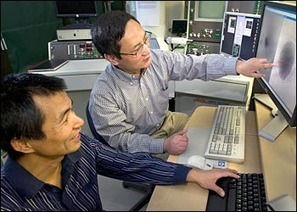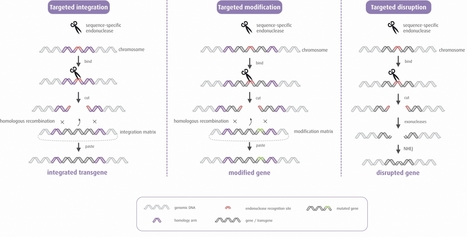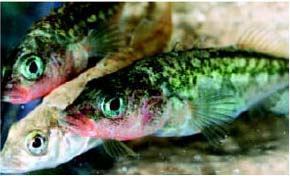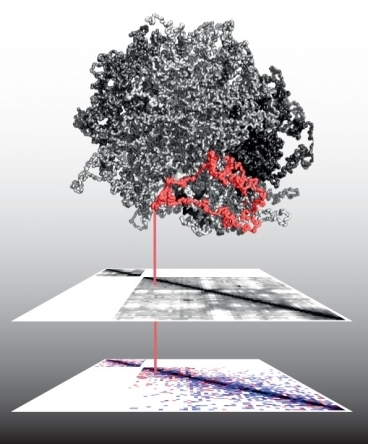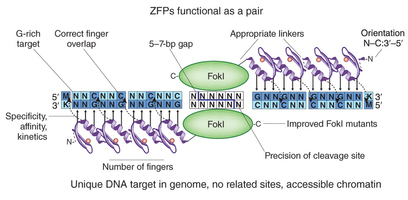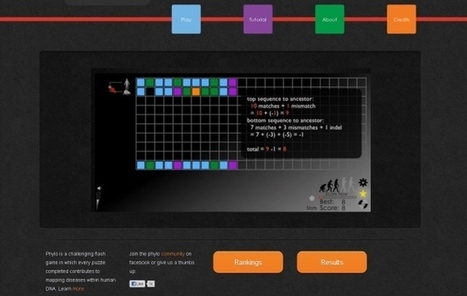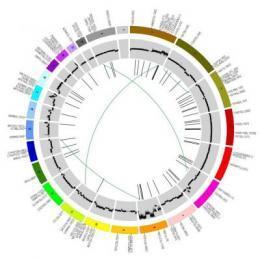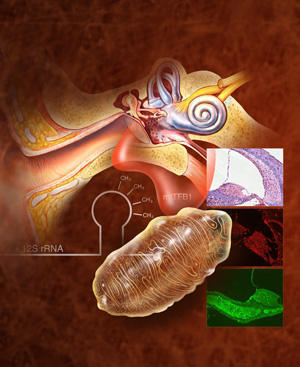 Your new post is loading...

|
Scooped by
Dr. Stefan Gruenwald
April 16, 2012 3:30 PM
|
Brisbane-based Coridon has reached another milestone in the development of its pioneering DNA vaccine against herpes simplex virus 2 (HSV-2) with results from a pre-clinical efficacy study showing it was 100 per cent effective in protecting animals against the virus. The vaccine was developed by Professor Ian Frazer and his team at Coridon, and the study was done in collaboration with Professor David Koelle at the University of Washington in Seattle. The DNA vaccine works differently to conventional vaccines. DNA from the virus is injected into the individual, and the body generates an immune response against the proteins encoded by that DNA. This then enables the body to mount an effective immune defence against the full virus should it ever appear. DNA vaccines have the tremendous benefit of not only offering prophylactic protection, but also potentially curing individuals currently infected by the virus. Coridon is developing DNA vaccines for the prevention and treatment of a range of infectious diseases and cancers in humans.

|
Scooped by
Dr. Stefan Gruenwald
April 15, 2012 10:26 PM
|
Scientists have deciphered molecular-level details of the complex choreography by which intricate cellular proteins recognize and bind to DNA to start the DNA replication process. The research may point to ways to block unwanted cell division.

|
Scooped by
Dr. Stefan Gruenwald
April 15, 2012 11:16 AM
|
Chloroplasts, the plant cell’s green solar power generators, were once living beings in their own right. This changed about one billion years ago, when they were swallowed up but not digested by larger cells. Since then, they have lost much of their autonomy. As time went on, most of their genetic information found its way into the cell nucleus; today, chloroplasts would no longer be able to live outside their host cell. Since the transfer of genes into the cell nucleus is an extremely slow evolutionary process, which has taken nature millions of years, it has not been possible to investigate the underlying mechanism to date. However, researchers have now managed to fast-forward this gene transfer in the laboratory. Because the cells were subjected to high selection pressure, the transference of genes from the chloroplasts into the nucleus became essential for survival, so that it could be made readily visible. It was found that the transfer takes place without the involvement of RNA and that the DNA apparently jumps directly from the cell’s chloroplasts into its nucleus.

|
Scooped by
Dr. Stefan Gruenwald
April 11, 2012 4:38 PM
|
The development of a new way to make a powerful tool for altering gene sequences should greatly increase the ability of researchers to knock out or otherwise alter the expression of any gene they are studying. The new method called the FLASH (fast ligation-based automatable solid-phase high-throughput) system -- assembles DNA fragments encoding a TALEN on a magnetic bead held in place by an external magnet, allowing automated construction by a liquid-handling robot of DNA that encodes as many as 96 TALENs in a single day at a cost of around $75 per TALEN, much lower than previously achieved. A manual version of FLASH allows labs without access to robotic equipment to construct up to 24 TALEN sequences per day. In tests inside human cells, FLASH-assembled TALENs were able to successfully induce breaks in 84 of 96 targeted genes known to be involved in cancer or in epigenetic regulation.

|
Scooped by
Dr. Stefan Gruenwald
April 4, 2012 2:34 PM
|
Native Americans originated from a small mountainous region in southern Siberia, new genetic research shows. The work is the most targeted study yet to suggest a genetic "homeland" for North America's indigenous peoples, according to the authors. New DNA analysis of ethnic groups living in the Altay Mountains in Russia revealed a unique genetic mutation that also occurs in modern-day northern Native Americans. A possible link between Siberians and Native Americans is an "age-old question" that was first raised by European explorers in the New World, said study leader Theodore Schurr, an anthropologist at the University of Pennsylvania in Philadelphia.

|
Scooped by
Dr. Stefan Gruenwald
April 4, 2012 1:30 PM
|
Twenty billion pieces of DNA in 100 small fish have opened the eyes of biologists studying evolution. After combining new technologies, researchers now know many of the genomic regions that allowed an ocean-dwelling fish to adapt to fresh water in several independently evolved populations.

|
Scooped by
Dr. Stefan Gruenwald
March 28, 2012 3:52 PM
|
All cattle are descended from as few as 80 animals that were domesticated from wild ox in the Near East some 10,500 years ago, according to a new genetic study. An international team of scientists from the CNRS and National Museum of Natural History in France, the University of Mainz in Germany, and UCL in the UK were able to conduct the study by first extracting DNA from the bones of domestic cattle excavated in Iranian archaeological sites. These sites date to not long after the invention of farming and are in the region where cattle were first domesticated. The team examined how small differences in the DNA sequences of those ancient cattle, as well as cattle living today, could have arisen given different population histories.

|
Scooped by
Dr. Stefan Gruenwald
March 23, 2012 1:57 PM
|
Sangamo is using zinc finger nuclease-mediated editing technology (ZNF) to replicate the naturally occurring human mutation in CCR5, a chemokine receptor that renders individuals largely resistant to infection with the most common strain of HIV. Sangamo’s approach comprises removal of CD4+ T-cells from the blood of immunologic non-responders HIV-infected subjects who are currently on highly active antiretroviral therapy (HAART), having undetectable levels of the virus but a suboptimal CD4+ T-cell counts. These CD4+ T-cells are then treated with Sangamo’s ZFNs that modify the DNA sequence encoding the CCR5 gene. The process indeed generates CCR5-modified, autologous T-cells (SB-728-T), which are then infused back into HIV/AIDS patients. The data obtained are actually stunning. The approach so far has proven to be safe, as infusions of SB-728-T are well tolerated. The CCR5-modified cells successfully engrafted in all subjects studied and resulted in a durable improvement in total CD4+ T-cell counts in five of six of the subjects analyzed. Five of the six subjects exhibited sustained improvements in their CD4:CD8 T-cell ratio, which is an indicator of immunologic health. The ZFN-CCR5-modified cells exhibited normal T-cell growth kinetics and trafficking and underwent selective expansion in the gut mucosa, a major reservoir of virus in the body, suggesting that the cells were resistant to HIV infection. http://tinyurl.com/8y99ors Nature also selected ZNF to be the method of the year for 2011: http://www.youtube.com/watch?v=zDkUFzZoQAs

|
Scooped by
Dr. Stefan Gruenwald
March 21, 2012 7:37 PM
|
One of the hallmarks of cancer cells is that certain regions of their DNA tend to get duplicated many times, while others are deleted. Often those genetic alterations help the cells become more malignant — making them better able to grow and spread throughout the body. Now, a team of MIT and Harvard University researchers has found that the three-dimensional structure of the cell’s genetic material, or genome, plays a large role in determining which sections of DNA are most likely to be altered in cancerous cells. http://tinyurl.com/8yheu6u

|
Scooped by
Dr. Stefan Gruenwald
March 16, 2012 2:59 PM
|
By bringing long-dead proteins back to life, researchers have worked out the process by which evolution added a component to a cellular machine. Cells rely on “machines” made of multiple different protein components to carry out many vital functions in the cell, and molecular and evolutionary biologists have puzzled about how they evolved. Joe Thornton at the University of Oregon in Eugene and his team chose to study a particular machine called the V-ATPase proton pump, which channels protons across membranes and is vital for keeping cell compartments at the right acidity. They first scoured databases and pulled out 139 genetic sequences that encode the ring’s component proteins in a range of eukaryotic organisms. They then used computational methods to work backwards and find the most likely sequences of these proteins hundreds of millions of years ago, at key branching points on the evolutionary tree: just before and just after the ring increased in complexity. The team synthesized DNA that encoded these “ancestral” proteins and put it into yeast, which had had parts of its own proton pump deleted. The technique allowed Thornton’s team to test in yeast whether various combinations of ancestral proteins produced a working, proton-pumping machine. http://tinyurl.com/7mdefdm

|
Scooped by
Dr. Stefan Gruenwald
March 13, 2012 6:14 PM
|
Zinc finger nucleases (ZFNs) are synthetic proteins consisting of an engineered zinc finger DNA-binding domain fused to the cleavage domain of the FokI restriction endonuclease. ZFNs can be used to induce double-stranded breaks (DSBs) in specific DNA sequences and thereby promote site-specific homologous recombination and targeted manipulation of genomic loci in a variety of different cell types. A long-term goal of the Zinc Finger Consortium is to develop ZFNs as broadly applicable and readily accessible molecular tools for performing targeted genetic alterations. The ability to alter the sequence or structure of any gene of interest would be enormously useful for biological research and molecular therapeutics. http://www.zincfingers.org/scientific-background.htm

|
Scooped by
Dr. Stefan Gruenwald
March 13, 2012 5:07 PM
|
Computer game crowdsources DNA sequence alignments across different species. The hope that swarms of gamers can help to solve difficult biological problems has been given another boost by a report in the journal PLoS One1, showing that data gleaned from the online game Phylo are helping to untangle a major problem in comparative genomics. The game was created to address the 'multiple sequence alignment (MSA) problem', which refers to the difficulty of aligning roughly similiar sequences of DNA in genes common to many species. A DNA sequence that is conserved across species suggests that it plays an important role in the ultimate function of that particular gene. http://tinyurl.com/72lxreb

|
Scooped by
Dr. Stefan Gruenwald
March 12, 2012 12:07 PM
|
LifeNaut is a free online service (and experiment) for personal data storage and avatar interactivity. It allows people to build a rich personal profile that preserves their essential, unique qualities as ‘mindfiles.’ You can also store your DNA. Mindfiles are database files with uploaded digital information (videos, pictures, documents, and audio recordings) about a person’s unique characteristics (such as mannerisms, attitudes, values, and beliefs). Future AI programs will use a mindfile and a person’s DNA to create a digital clone of that person that can interact with future family members and others. http://www.kurzweilai.net/welcome-to-your-future-clone
|

|
Scooped by
Dr. Stefan Gruenwald
April 15, 2012 10:49 PM
|
Fifty years ago, scientists uncovered a microbe capable of withstanding radiation in canned meat that had been bombarded with gamma rays. Named Deinococcus radiodurans--or "strange berry that withstands radiation" --the microorganism can survive doses of radiation up to 500 times that which would kill a human. These doses shatter D. radiodurans' DNA--just as they would in a human--but the microbe can repair its broken DNA and spring back to life within hours, depending on the dose. Researchers in France have now finally determined how the most durable of extremophiles manages this trick. "We have discovered the mechanism by which a clinically dead cell resurrects back to life," explains Miroslav Radman of INSERM, France's public biomedical research institution. "This extreme radiation resistance is but a by-product of its selection for resistance to desiccation."

|
Scooped by
Dr. Stefan Gruenwald
April 15, 2012 4:15 PM
|
Researchers from the University of North Carolina at Chapel Hill have helped identify a new DNA entity in mammalian cells and provided evidence that their generation leaves behind deletions in different locations of the cells’ genetic program, or genome. The researchers discovered these new entities in mouse tissues and brain cells and in human cell lines. Unlike previously identified large DNA circles, these circles of unique non-repetitive microDNA sequences are in the coding and control regions of genetic information.

|
Scooped by
Dr. Stefan Gruenwald
April 12, 2012 10:44 AM
|
The spatial organization is intimately linked to its role in the body. The findings provide scientists with a greater understanding about the basic principles of DNA folding and its role in gene regulation. Using a powerful DNA sequencing methodology, researchers at the Ludwig Institute for Cancer Research have investigated the three-dimensional structure of DNA folds in the nucleus of a chromosome.

|
Scooped by
Dr. Stefan Gruenwald
April 11, 2012 12:21 PM
|
The Breast Cancer Genome Guided Therapy Study (BEAUTY Project) will help physicians tailor chemotherapy to breast cancer patients based on their individual genomes and the genomes of their tumors. Mayo Clinic researchers will obtain three whole genome sequences: one from the patients' healthy cells before treatment, and two tumor genomes – one before chemotherapy and one after. Patients will be paired with mouse "avatars" that will help physicians identify the best treatment for each person. Additional read: DNA of 50 breast cancer patients decoded (http://tinyurl.com/7upzl3z)

|
Scooped by
Dr. Stefan Gruenwald
April 4, 2012 2:02 PM
|
An autism sequencing consortium led by researchers from the Broad Institute, Massachusetts General Hospital, and six other organizations has searched for autism-related mutations in the fraction of the human genome that codes for proteins. Autism spectrum disorders (ASD) are believed to have genetic and environmental origins, yet in only a modest fraction of individuals can specific causes be identified. Fewer than half of the cases investigated in this study (46.3%) carry a missense or nonsense de novo variant, and the overall rate of mutation is only modestly higher than the expected rate. In contrast, the proteins encoded by genes that harboured de novo missense or nonsense mutations showed a higher degree of connectivity among themselves and to previous ASD genes as indexed by protein-protein interaction screens. The small increase in the rate of de novo events, when taken together with the protein interaction results, are consistent with an important but limited role for de novo point mutations in ASD, similar to that documented for de novo copy number variants. Genetic models incorporating these data indicate that most of the observed de novo events are unconnected to ASD; those that do confer risk are distributed across many genes and are incompletely penetrant (that is, not necessarily sufficient for disease). The results support polygenic models in which spontaneous coding mutations in any of a large number of genes increases risk by 5- to 20-fold. Despite the challenge posed by such models, results from de novo events and a large parallel case–control study provide strong evidence in favour of CHD8 and KATNAL2 as genuine autism risk factors. Three original papers are here: http://www.nature.com/nature/index.html

|
Scooped by
Dr. Stefan Gruenwald
April 2, 2012 10:23 AM
|
Nobody knows which sequencing technology is fastest because there has never been a fair way to compare the rate at which they extract information from DNA. Until now.

|
Scooped by
Dr. Stefan Gruenwald
March 24, 2012 12:48 AM
|
All the Proteus patients studied shared the same single-base mutation in a gene called AKT1. The same glitch appeared in 26 of 29 patients diagnosed with Proteus disease and in 1% to about 50% of the DNA in positive cell samples investigated. To bolster the case that the mutation was causing disease, the scientists also showed that the AKT protein is overactive in the abnormal cells. The AKT1 gene, which is part of a cell-growth pathway, has also been found to be mutated in some cancers.

|
Scooped by
Dr. Stefan Gruenwald
March 23, 2012 1:42 PM
|
A new DNA-based logic circuit can sense the signs of cancer, compute that a cell is cancerous, and then cause it to self-destruct, researchers say. The cell-level diagnostic system could be used for drug screening or perhaps for disease treatment, killing tumors while leaving healthy cells alone. In principle, the circuit works like any other logic circuit: It analyzes multiple inputs and makes a decision. In this case, the circuit really consists of genes that can detect up to five cancer-specific molecules and their concentrations. When all five of those characteristics are present, the circuit makes a positive determination, and then it triggers cell death. http://tinyurl.com/438a5wl

|
Scooped by
Dr. Stefan Gruenwald
March 16, 2012 3:14 PM
|
Identifying Cancer Mutations - Determining the underlying cause of disease is a daunting task. In a 1994 Time magazine interview, Francis Collins, now director of the National Institutes of Health, said that locating a gene from scratch was like "trying to find a burned-out light bulb in a house located somewhere between the East and West coasts without knowing the state, much less the town or street the house is on." With its 3 billion base pairs distributed over 23 paired chromosomes, the human genome is an epic map to navigate. Nevertheless, an international effort to map the human genome at the individual DNA base pair level—the Human Genome Project—was initiated in 1990. The effort cost more than $2.7 billion, involved 20 research institutes and culminated in 2003 with the publication of the completed DNA sequence of the human genome. http://tinyurl.com/6pp4l6j

|
Scooped by
Dr. Stefan Gruenwald
March 13, 2012 10:12 PM
|
Long before Watson and Crick famously uncovered the structure of DNA in 1953, people envisioned with both horror and hope a day when babies could be custom designed — free of inherited disease, yet equipped with superior genes for good looks, intelligence, athleticism, and more. Now the beginnings of the day of designer babies have finally come. http://tinyurl.com/baeqm9

|
Scooped by
Dr. Stefan Gruenwald
March 13, 2012 5:11 PM
|
Scientists have discovered the molecular pathway by which maternally inherited deafness appears to occur: Mitochondrial DNA mutations trigger a signaling cascade, resulting in programmed cell death. http://tinyurl.com/86v4blp

|
Scooped by
Dr. Stefan Gruenwald
March 13, 2012 12:06 PM
|
A new imaging technique, developed by Erez Lieberman-Aiden, a Junior Fellow of the Society of Fellows, is giving scientists their first three-dimensional view of the human genome. A 3-D image shows how DNA packs itself tightly into a structure known as a “fractal globule.” The structure is unique in that the genome is completely unknotted, meaning, that “despite how densely it’s packed, you can pull on it, easily get to the region you want to transcribe, read it off, and put it back when you’re done,” explained Erez Lieberman Aiden. http://tinyurl.com/74avts5
|



 Your new post is loading...
Your new post is loading...



